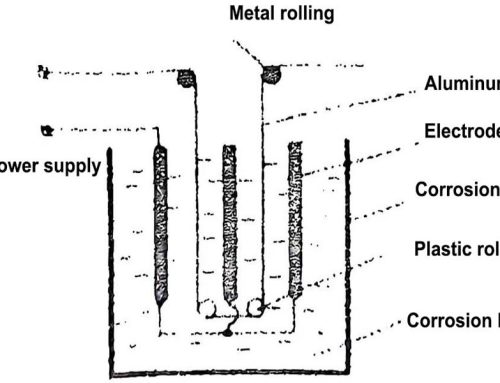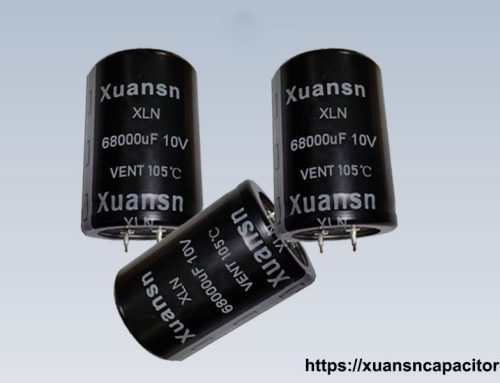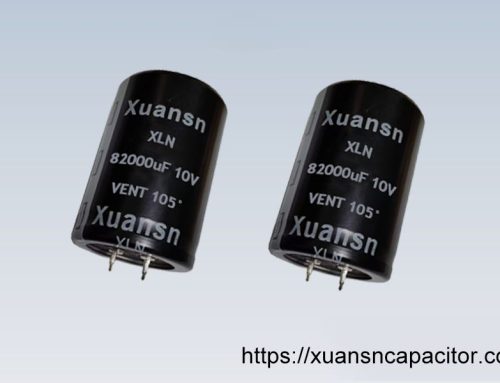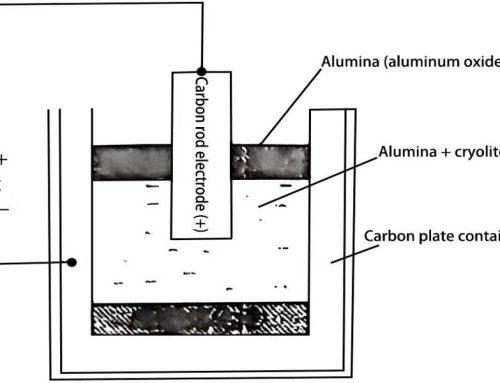As described in Section 4 of this chapter, capacitor failures in AC and DC filters and parallel capacitor devices account for more than 90% of device failures. During the operation of the capacitor, there are many factors affecting the life of the capacitor from the outside world and the system, mainly including: temperature, voltage, harmonics, inrush current, etc. Studying and analyzing these factors affecting capacitor life and their impact on the actual service life, and proposing corresponding solutions will undoubtedly greatly improve the reliability and service life of the filter and parallel capacitor devices in the DC transmission system, and its technical and economic benefits will be considerable.
1.Factors affecting capacitorlifeby temperature
The speed of capacitor dielectric aging is a function of the dielectric temperature, which can usually be expressed by formula (1):
![]() (1)
(1)
Where L is the life of the capacitor;
t is the dielectric temperature inside the capacitor;
A, m are constants determined by the dielectric characteristics.
According to the rule that the life of the capacitor is reduced by half for every 7~8℃ increase in the dielectric temperature inside the capacitor, formula (1) can be converted into formula (2) for the convenience of actual calculation:
![]() (2)
(2)
Where L is the life of the capacitor when the dielectric temperature is t;
L0——The life of the capacitor when the dielectric temperature is to;
△t——The internal dielectric temperature rise corresponding to the capacitor life being reduced by half, usually △t=7~8℃.
From formula (2), it can be seen that among the factors affecting capacitor life, when the life L0 at the dielectric temperature t0 is obtained through experiments, the life L at the dielectric temperature t can be estimated through formula (2). The higher the dielectric temperature inside the capacitor, the shorter the life of the capacitor.
The maximum dielectric temperature t inside the power capacitor can be obtained by formula (3):
![]() (3)
(3)
Where t1——The ambient temperature when the capacitor is running;
t2——The hottest point temperature rise on the capacitor case;
k——The ratio of the hottest point temperature rise of the dielectric inside the capacitor to the hottest point temperature rise on the case, for different capacitors k=1.2~2, which can be obtained through experiments.
It can be seen from formula (3) that the important factor t that determines the life of the capacitor is not only determined by the ambient temperature t1, but also to a certain extent is related to the temperature rise of the hottest point on the capacitor case t2 and the ratio of the hottest point temperature rise of the internal medium to the hottest point temperature rise on the case k. Therefore, in order to increase the actual service life of the capacitor, we should do everything possible to improve the heat dissipation conditions of the capacitor during operation to reduce the case temperature rise t2. When designing the capacitor, the internal thermal resistance of the capacitor should be reduced as much as possible, and low-loss dielectric materials should be used to minimize the k value of the capacitor. The capacitor should be prevented from operating for a long time under overload (this point is controlled by the absolute minimum filter in the DC transmission system, and the overload operation of the filter and parallel capacitor is strictly limited), because under overload conditions, the capacity and total heat generation power of the capacitor increase, which increases the temperature rise of the hottest point on the capacitor case and the hottest point of the internal dielectric, accelerates the thermal aging of the internal dielectric of the capacitor, and shortens the actual service life.
In addition, for full-film capacitors whose internal dielectric is biaxially oriented polypropylene film, the dielectric temperature t at the hottest point inside the capacitor should not exceed its maximum allowable operating temperature (usually 85~90℃). Because when the temperature of the film exceeds its maximum allowable operating temperature, abnormal expansion will occur, causing the electrical strength of the film to decrease and the actual service life to be shortened.
When the dielectric of the capacitor operates at a low temperature below 0℃ or even lower, the thermal aging of its dielectric can be ignored. However, if the capacitor is put into operation in the grid when the temperature of its internal dielectric is lower than the lower limit temperature allowed by its design, the factors affecting capacitor life will increase significantly, which will cause serious damage to the capacitor. This is because at low temperatures below its lower limit temperature, the viscosity of the impregnant inside the capacitor increases, the fluidity deteriorates, the internal pressure decreases, and the electrical strength of the capacitor medium decreases significantly. If the capacitor is suddenly put into the grid at this time, under the action of surge current and overvoltage, partial discharge will occur inside the capacitor, causing the capacitor to age electrically, seriously affecting the actual service life of the capacitor. For capacitors installed in cold areas, if the filter and parallel capacitor are shut down when the DC system is lightly loaded at night, and these capacitors that have been frozen overnight are put into operation when the load increases in the morning, if the internal dielectric temperature of these capacitors has dropped below the lower limit temperature allowed, it is very likely that the capacitor will be seriously damaged or even damaged early.
Due to the rapid development of my country’s DC transmission system, there are DC converter stations under construction and to be built in various regions of my country, and filters and capacitors will also be put into operation in large quantities. Operation and maintenance personnel should pay special attention to the factors affecting capacitor life. In view of this, the operation and maintenance personnel must pay special attention to the operating temperature range of the capacitor indicated on the capacitor nameplate during the infrastructure installation stage. For those that do not meet the local minimum ambient temperature due to poor design considerations, they should be promptly proposed during the infrastructure stage and required to be replaced.
2.Voltage factors affecting capacitor life
At present, due to the development of DC transmission in my country towards high voltage and large capacity [the Yunnan-Guangdong ±800kV UHV DC project and the Xiangjiaba-Shanghai ±800kV UHV DC project have been put into operation, and the ±1100kV UHV DC project is being demonstrated], this will inevitably put forward higher requirements for the design of capacitors for AC and DC filters and parallel capacitor devices. Capacitors operating under high voltage, especially very high DC voltage, will experience significant electrical aging of the dielectric in the capacitor due to the effect of high electric fields. The relationship between the service life of a capacitor and the operating voltage can usually be expressed by formula (4):
![]() (4)
(4)
Where L is the service life of the capacitor;
K is a constant;
U is the operating voltage of the capacitor;
n is the voltage accelerated aging index.
Let the service life of the capacitor under voltage U0 be L0 , and the service life of the capacitor under voltage U be L.
Formula (4) can be rewritten as formula (5):
![]() (5)
(5)
The voltage accelerated aging index in the formula depends on the dielectric material. For capacitors with all-polypropylene film dielectrics, n is 9~11.
Formula (5) only represents the effect of voltage factors on the service life of capacitors in terms of electrical aging. In fact, voltage increase is one of the factors affecting capacitor life. As the voltage applied to the capacitor increases, the actual capacity Q and heat generation Qtanδ of the capacitor will increase rapidly with the square of the voltage, thereby increasing the hottest point temperature of the dielectric inside the capacitor and accelerating the thermal aging of the capacitor dielectric. Therefore, the increase in voltage acting on the capacitor will accelerate both the electrical aging and thermal aging of the capacitor. Moreover, once the voltage applied to the capacitor exceeds the initial partial discharge voltage of the capacitor, its internal dielectric will be seriously damaged. The capacitor may fail in just a few minutes to a few hours under the voltage higher than its initial partial discharge voltage. Therefore, in order to ensure the reliability and long life of the capacitor operation, full attention should be paid to various overvoltages that may be applied to the capacitor during operation, and necessary protection should be taken.
Power capacitors are different from other power equipment. When the capacitor is put into operation, the voltage of the local bus (AC network side of the converter station) will increase. If a series reactor is connected in series with the capacitor, the voltage at the capacitor terminal will be higher than the voltage on the AC network side. In order to protect the capacitor from long-term steady-state overvoltage, when selecting the rated voltage of the capacitor, the appropriate rated voltage value should be selected based on full consideration of these factors affecting capacitor life.
In addition to the above-mentioned steady-state overvoltage that shortens the service life of the capacitor, when switching on and off the capacitor, or when switching on and off other electrical equipment connected in parallel with the capacitor, a transient overvoltage of very short time and large amplitude will also appear between the terminals of the capacitor. Of course, during the entire operation of the capacitor, these transient overvoltages acting on the capacitor are difficult to completely avoid. GB/T 11024.1-2010 stipulates: “Before being put into operation, the residual voltage on the capacitor should not exceed 10% of the rated voltage (for this reason, after the converter station manually exits the filter and parallel capacitor device, the capacitor needs to undergo a certain period of discharge before it can be put into operation next time). When the filter and parallel capacitor device are switched on and off with a non-re-breakdown circuit breaker, a transient overvoltage with a first peak value not exceeding 2 times the applied voltage (root mean square value) and a duration not exceeding 1/2 cycle is usually generated. Under these conditions, the capacitor can be switched on and off 1000 times per year.” In other words, the capacitor has the ability to withstand transient overvoltages as specified in the above standards. However, if the transient overvoltage acting on the capacitor exceeds the relevant specified value in the above standards, the internal dielectric of the capacitor will be damaged, which is one of the typical factors affecting capacitor life, thereby shortening the life of the capacitor. For example:
(1) When the circuit breaker disconnects the charging current of the capacitor, if the recovery voltage between the switch breaks exceeds the insulation tolerance of the switch break, a severe breakdown will occur between the switch breaks, and a high-amplitude abnormal voltage will appear between the capacitor terminals, causing damage to the dielectric in the capacitor or even breakdown. In order to protect the capacitor from abnormal overvoltage during operation, the capacitor must be switched on and off with a circuit breaker that does not undergo severe breakdown. In view of this, the SF. circuit breakers used in DC converter stations can meet the requirements.
(2) Due to the power reduction of the DC transmission system, after the filter and the shunt capacitor are removed from the system, there is still a certain residual voltage between the capacitor terminals. If the capacitor is put into operation again before this residual voltage drops below 10% of the rated voltage specified in the standard, the external voltage will be superimposed on the residual voltage on the capacitor, which may cause high surge current and overvoltage, which is also one of the important factors affecting the life of the capacitor, thereby damaging the capacitor and shortening the service life of the capacitor. In view of this, whether the DC converter station adopts reactive power automatic control (in automatic control mode, the DC control protection system controls the next switching of the capacitor to ensure that the residual voltage drops to 10% of the rated voltage) or manual control, it must meet this requirement.
3.Factors affecting capacitor life: harmonic factors
The impact of harmonics on the life and reliability of capacitors is mainly manifested in the following aspects.
3.1 Voltage waveform distortion and peak increase
When high-order harmonic current flows into the capacitor, multiple high-order harmonic voltages are superimposed on the fundamental voltage between the capacitor terminals, resulting in the voltage acting on the capacitor terminals being distorted and the peak value increasing. This voltage distortion is one of the factors affecting capacitor life.
When the fundamental current and high-order harmonic current flow through the capacitor at the same time, the voltage between the capacitor terminals is
![]() (6)
(6)
Where U is the voltage acting between the capacitor terminals;
U1 is the fundamental voltage acting between the capacitor terminals;
I1 is the fundamental current;
In is the nth harmonic current;
n is the harmonic number.
It can be concluded from formula (6) that the larger the amplitude of the high-order harmonic current In, the lower the harmonic order n, the higher the voltage between the capacitor terminals, and the more significant the negative effect of the factors affecting capacitor life.
3.2 Actual capacity increases
When a high-order harmonic current flows through the capacitor, its actual capacity can be expressed by formula (7):
![]() (7)
(7)
Where Q is the actual capacity of the capacitor;
Q1 is the fundamental capacity of the capacitor.
That is, the actual capacity of the capacitor when a harmonic current flows through it is the sum of its fundamental capacity and harmonic capacity. The larger the high-order harmonic current In flowing into the capacitor, the lower the harmonic order n, and the larger its actual capacity. As the capacitor capacity increases, the heat generation increases, the temperature rise increases, the temperature of the internal medium of the capacitor increases, and the thermal aging intensifies, which eventually becomes one of the key factors affecting the life of the capacitor, shortening the actual life of the capacitor.
3.3 Increased synthetic current
Higher harmonics increase the synthetic current flowing into the capacitor, as shown in formula (8):
![]() (8)
(8)
Where I is the total current flowing into the capacitor.
From formula (8), it can be seen that the total current flowing into the capacitor increases with the increase of higher harmonic current ΣIN2The copper loss and I2R generated on the current-carrying conductor inside the capacitor increase accordingly, and the temperature rise increases. Especially when there is poor contact at the capacitor terminals and some connecting parts, local overheating often occurs in these places, affecting the life of the capacitor. This effect is an important aspect of the factors affecting capacitor life.
In addition to the above situation, when the capacitor is put into operation in the AC system, the original harmonics in the AC system may also show a certain “amplification” phenomenon. In order to prevent the occurrence of this harmonic “amplification” phenomenon, before designing and installing filters and parallel capacitor devices that provide reactive power, the harmonic frequency and content in the local power grid should be carefully studied, and corresponding measures should be taken in a targeted manner.
4.Factors affecting capacitor life: Inrush current effect
When the filter and parallel capacitor device are directly put into operation, an inrush current with high-frequency attenuation oscillation characteristics will be generated at the moment of input. When a single capacitor group is put into operation, the first peak of the inrush current is usually limited by the power supply impedance. When the capacitor uses an impregnation material with a large dielectric constant and a small loss tangent value, the impact of the inrush current is particularly significant. This is also one of the factors affecting capacitor life.
In summary, with the large-scale use of AC and DC filters and parallel capacitor devices in DC systems, more capacitors will be put into operation. In order to improve the quality of capacitor products, it is recommended to:
(1) Select high-quality metallized films and impregnation agents, and control the raw materials.
(2) Improve and perfect key processes, such as the production process of capacitor element winding, gold spraying, and impregnation, and improve the process implementation level of operators during the production process.
(3) Improve production environment conditions, such as welding and vacuum impregnation processes, and strictly enforce process environment requirements.
(4) Strictly implement national standards, attach importance to test conclusions and scientific management, and strictly control process quality.




